Leslie Thornton
2021Peggy and Fred in Hell: The Complete Cycle
Leslie Thornton
"Highly idiosyncratic and deeply creepy, this series as a whole – which includes passages in both film and video, sometimes shown concurrently – represents the most exciting recent work in the American avant-garde, a saga that raises questions about everything while making everything seem very strange." - Jonathan Rosenbaum
Peggy and Fred in Hell: The Complete Cycle
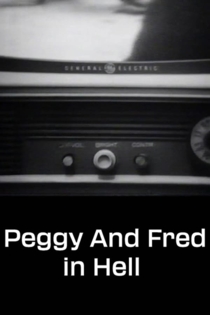
Adynata
Leslie Thornton
A formal 1861 portrait of a Chinese Mandarin and his wife is the starting point for this allegorical investigation of the fantasies spawned in the West about the East, particularly that which associates femininity with the mysterious Orient. ADYNATA presents a series of oppositions-male and female images, past and present sounds-which in and of themselves construct a minimal and fragmentary narrative, an open text of our imaginations, fears and fantasies.
Adynata
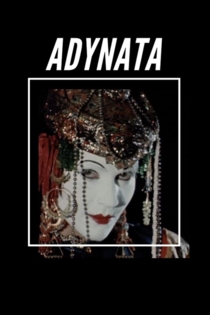
All Right You Guys
Desmond Horsfield, Leslie Thornton
A portrait of Thornton’s sister and a close friend. Shot while studying with cinema verite masters Ed Pincus & Richard Leacock, this early film transgressed documentary norms, shaping its portrait of two women with a formal, almost musical editing schema.
All Right You Guys
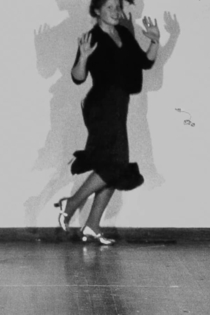
Novel City
Leslie Thornton
In Novel City, Thornton revisits her 1983 film Adynata, which explored questions of the Other through what Thornton has termed an "Orientalist spectacle" that was "intended to bring about a critical self-response, a simultaneous attraction and repulsion that provoke an instance of cultural self-awareness." In her new work, Thornton confronts the economic and cultural transformation of contemporary China, evoking a new spectacle of capitalism run amok. Thornton shoots from her window of the Jin Jiang Hotel in Shanghai, the site of Mao's 1972 meeting with Nixon, and projects images from the earlier movie, creating a layered landscape of alienation and dislocation. - Description from EAI
Novel City

Dung Smoke Enters the Palace
Leslie Thornton
An anti-narrative adventure traveling through a phantasmagoric environment void of stability. The video presents a bizarre compendium of archival and industrial footage accompanied by a noisy soundtrack of music and voices from the past, as if echoing the ether of the viewer’s mind. Thornton’s distinctive visual style of collaging random elements elicits an eerie sense of being lost amidst past and present, breeding a confusion that complicates any clear reading of the image.
Dung Smoke Enters the Palace

Let Me Count the Ways: 10...9…8…7…6
Leslie Thornton
The title simultaneously references the countdown to the dropping of the bomb and suggests anticipation. Minus 10 juxtaposes footage of the artist’s father in Los Alamos and on the way to Tinian Island with an interview with a woman in Japanese about the bombing. Minus 9 aligns an American nurse’s eyewitness account of the bombing and its aftermath with aerial landscape shots blocked by a blinking blue circle which could represent a mutant sun, an eye, planet Earth, an afterimage, or the inverted “rising sun” of Japanese national symbolism. Minus 8 and Minus 7 show excerpts from a documentary, The Growth of Plants overlaid by running text describing radiation-induced botanical mutations. Minus 6 explores current American war policies and ethics contrasted against the histrionics of Adolf Hitler; as the dictator gesticulates on-screen, women’s voices recite a diatribe by Goebbels.
Let Me Count the Ways: 10...9…8…7…6
Another Worldy
Leslie Thornton
Another Worldy opens with "The Lucky Girls" dancing atop a New York City skyscraper to the music of an all-female band. Among the many other dancers whose performances Thornton appropriates, this troupe of young, professional female 1940s-era American dancers reappears throughout both versions of the film in seedy Algerian dives, Russian outposts and Parisian can-can establishments. A preternatural luck seems to take them everywhere in space and in time with infinite energy. Yet as their various world travels were most likely filmed on the same sound stage, they are like-wise emblems of a flimsy utopia. In this void, there is no sound, or rather, the original sound of the all-female band is replaced by a techno beat that uncannily seems to have belonged there all along, punctuating the regulated paroxysms of ultimate global unity--promised in the image but deferred through the never-resolving beat.
Another Worldy

Strange Space
Leslie Thornton
This collaborative work, created specifically for the 1992 Day Without Art/AIDS Awareness Day, addresses what Thornton terms "the relationship between the medicalization of the body and the personal." While the actor Ron Vawter reads aloud from a poem by Rilke, a doctor is heard discussing Vawter's medical condition. Medical photographs of internal organs and images of the moon's surface create landscapes of inner and outer space. This haunting rumination suggests the disparity between medical interpretations and personal experiences of physicality and mortality.
Strange Space

They Were Just People
Leslie Thornton
Two circles, twice the same image: a restless pool of simmering tar. The soundtrack also evokes hellish associations with an eyewitness report of atom bombs dropping on Japan. The abstract image and resigned voice of a nurse lift the factual information to a different level, as if we are looking at an MRI scan of someone’s thoughts.
They Were Just People

Ground
Leslie Thornton
In her eponymous film “Ground” (2020), Thornton outlines the coming into form of a reality in which the ground or base—like the ground of a painting or the physical ground that human existence has always been pulled toward by gravity—becomes undefined.
Ground

The Last Time I Saw Ron
Leslie Thornton
Ron Vawter
Made in memory of the actor and my friend, Ron Vawter. Ron passed away shortly after the opening performances of the play "Philoktetes Variations," directed by Jan Ritsema and co-authored by Ritsema and Vawter. It was produced by the Kaaitheater in Brussels. All of the images in this video were originally created for the play.
The Last Time I Saw Ron

Photography is Easy - Version 2
Leslie Thornton
In the ongoing project Photography is Easy, Thornton continues her investigation of the production of meaning through media such as photography, film and video. Thornton and a companion are seen hiking through a desert, photographing and recording the journey. Shots of desert landscapes are overlaid with the artist's running commentary and text about Thornton's experience of making a photograph. Questioning the value of the rarified image, Thornton investigates the porous boundaries between the still and the moving image.
Photography is Easy - Version 2

Jennifer, Where Are You?
Leslie Thornton
Jennifer, Where Are You? is structured by a speech-act, a constant proleptic call, a man’s voice which has been edited and recut into a repetitive and pervasive presence. The insistence of this male voice, which repeats the phrase “Jennifer! Where are you?” every 30 seconds, parodies the authority conceded to voice-overs in the cinema. The voice is patriarchal, relentless, and runs the entire length of the film. Cut-aways to a small girl, glancing at the camera as she plays with lipstick and matches, reapportion the relation between patriarchal phonocentrism and masculine gaze. But is this small child subject to either? No. Not really. There she is, hiding in plain sight–ours, not ‘his’–a ‘purloined subject’ successfully evading subjugation through response or acquiescence. ‘Jennifer,’ whoever she might be (a cipher, a pseudonymous textual marker of gendered cinematic presence) is never apprehended, and the film, for all of its suspense, simply ends.
Jennifer, Where Are You?

Cut from Liquid to Snake
Leslie Thornton
Thornton evokes the instability that humankind acts upon through a combination of several voices – from cold to melancholic to anxious – all at textural odds with one another. An entry point into the work is the artist’s metaphorical use of the Higgs Boson, first encountered during her recent residency at CERN.
Cut from Liquid to Snake

Peggy and Fred in Kansas
Leslie Thornton
Peggy and Fred in Kansas is one of the earliest installments in Thornton's Peggy and Fred in Hell series. Thornton represents the outside world with archival footage of rugged terrain and industrial wastelands. We are introduced to the post-apocalyptic room where the children act and re-enact a disjointed play on media narratives. Though the seemingly isolated room is furnished with typically domestic objects, in the hands of the "children raised on television" these items appear as props for the purpose of performing adult affectation. Peggy and Fred channel their isolation like open radios, as if boredom were the frequency from which media is transmitted. - Description from EAI
Peggy and Fred in Kansas
